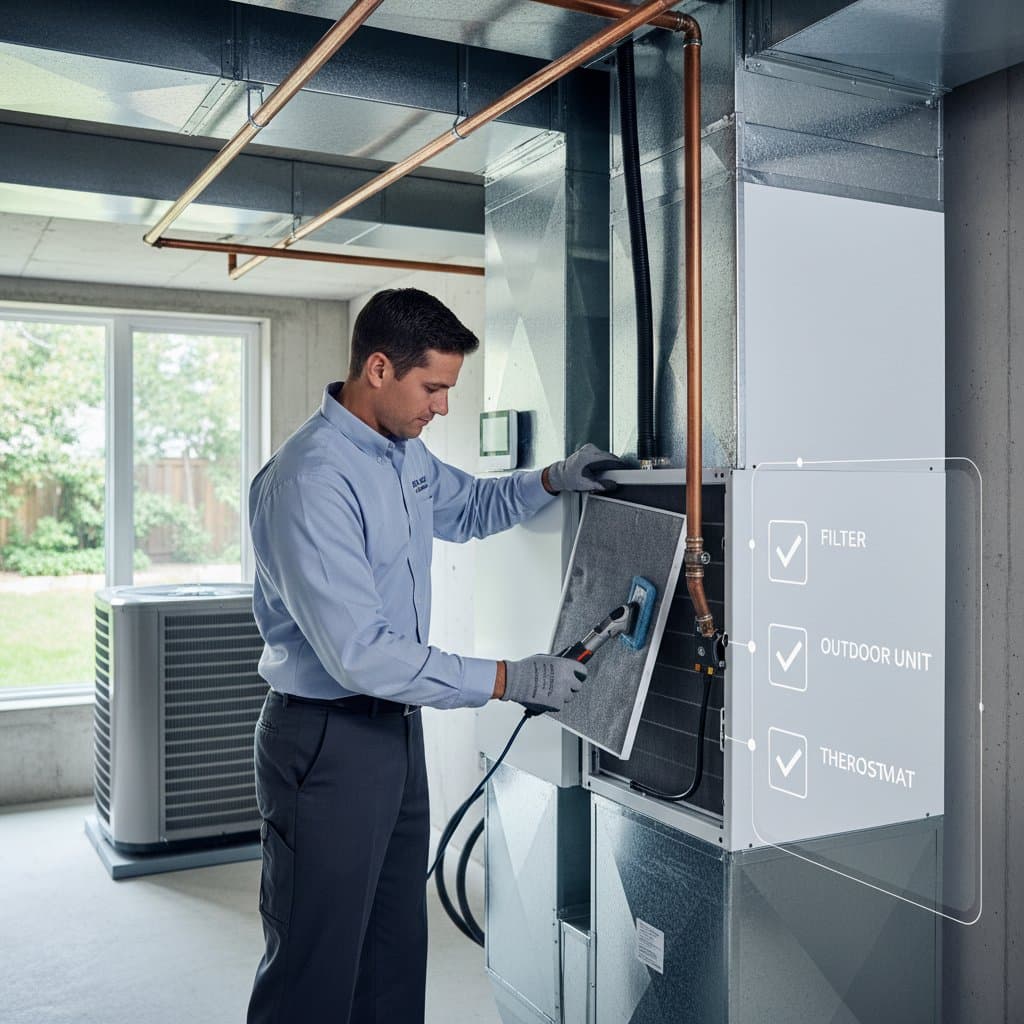Fall HVAC Filters: Timing and Types for Peak Efficiency
When temperatures drop, a well-maintained HVAC filter makes the difference between efficient heating and wasted energy. Fall serves as the ideal time to prepare the system for heavy seasonal use. Clean air filters improve indoor air quality and extend the life of the furnace or heat pump. Proper timing and selection of replacement filters maintain consistent comfort while controlling costs.
Optimal Timing for Fall Filter Replacement
Fall marks the transition from cooling to heating, which increases the importance of filter maintenance. Dust and pollen from late summer often clog filters during this period, reducing airflow and straining the system. Replace filters before the first major temperature drop to ensure efficient operation throughout the cold months.
Standard filters require replacement every two to three months during the heating season. Homes with pets, smokers, or high dust levels need monthly changes. Smart thermostats and air quality monitors provide alerts when airflow pressure changes, indicating a clogged filter. Pair filter replacement with seasonal furnace inspections to create a comprehensive maintenance routine that prevents breakdowns.
Selecting the Right Filter Type for Fall
HVAC systems shift to heating mode in fall, making filter choice critical for performance and air quality. Each type offers specific benefits based on household needs, equipment specifications, and environmental factors.
- Fiberglass filters provide basic protection with minimal airflow resistance. They suit short-term use or rental properties with frequent maintenance cycles and cost ten to twenty dollars each.
- Pleated filters balance cost and efficiency by trapping smaller particles like mold spores and pet dander. They last up to three months and range from twenty to forty dollars.
- Electrostatic filters use static charge to attract particles and prove washable for reuse. Proper care yields long-term savings, with prices similar to pleated options.
- HEPA filters capture up to 99 percent of airborne particles, ideal for allergy-sensitive environments. They require system adjustments for airflow and cost fifty to one hundred dollars.
- Activated carbon filters eliminate odors and chemical vapors, beneficial for homes with smokers or strong cooking smells. They integrate well with other types for enhanced purification.
Consider the MERV rating, which measures particle capture efficiency. Higher ratings improve performance but increase cost and may restrict airflow if not matched to the system.
Understanding HVAC Filter Costs
Filter prices vary by size, material, and rating. Standard residential filters average ten to forty dollars, while high-efficiency models for allergies or particulates range from fifty to one hundred dollars. Custom or commercial sizes exceed this range.
Regional differences affect pricing. Coastal or urban areas see higher costs due to supply chain and humidity impacts on materials. Central and rural regions enjoy lower markups. Prices rise in fall and spring with demand peaks, though summer and winter promotions help balance inventory.
Economic factors like raw material and energy costs influence prices. Petroleum-based materials or metal frames drive increases, as do shipping and manufacturing delays.
Pricing Models for Filters and Services
Homeowners purchase filters through per-unit sales, multi-packs, or subscriptions. Bulk buys offer ten to twenty percent discounts, ideal for larger homes. Subscription programs deliver filters monthly for fifteen to fifty dollars, based on quality and frequency.
Maintenance packages include labor and inspections, adding fifty to one hundred dollars. Commercial contracts bundle filter replacement into annual agreements averaging five hundred to one thousand dollars per system.
Service tiers align with filter types:
- Basic filters (fiberglass or polyester) capture large particles and cost ten to twenty dollars, lasting one to two months.
- Standard pleated filters enhance capture with more surface area, priced at twenty to forty dollars for up to three months.
- Premium HEPA or carbon filters target fine particles and odors, costing fifty to one hundred dollars for three to six months.
- Specialized filters with antimicrobial coatings or custom fits exceed one hundred dollars and suit health-focused settings.
Factors Affecting Costs and Performance
System size determines filter dimensions and capacity, with larger units requiring pricier options. Usage intensity shortens lifespan in homes with daily operation. Conditions like pets or construction accelerate clogging.
Energy goals favor filters with sensors for optimized airflow, which cost more upfront but reduce long-term use. Balance performance with system needs to avoid motor strain from restrictive filters.
Additional Services to Consider
Enhance filter replacement with optional services:
- Duct cleaning, priced at three hundred to six hundred dollars, extends filter life.
- Air quality testing, from one hundred to three hundred dollars, identifies ideal filter types.
- System sanitization, starting at one hundred dollars, removes microbial buildup.
- Expedited service adds twenty to thirty percent during peak fall demand.
Inspection fees of seventy to one hundred dollars often include calibration for balanced airflow.
Expert Advice for Cost Savings and Efficiency
HVAC technician Laura Kent from AirPro Systems states, "Replacing filters on schedule can reduce heating energy use by up to fifteen percent. A clean filter allows the blower fan to move air freely, which keeps the furnace from working harder than it should."
Consumer surveys indicate that quarterly replacements lead to fewer failures and lower repair costs. A study by the National Association of Home Performance Professionals reveals that high-efficiency filters with regular maintenance save one hundred fifty dollars annually on energy, offsetting premium prices.
Certified contractors recommend matching filters to system specifications and air quality needs. This approach ensures optimal performance without unnecessary strain.
Implement Your Fall Maintenance Plan
Start by inspecting current filters for visible dirt or reduced airflow. Select a type aligned with your home's demands and replace promptly to capitalize on fall efficiency gains. Track replacements in a calendar or app to sustain savings and comfort through winter. Regular attention to filters protects your investment and promotes healthier indoor air.





